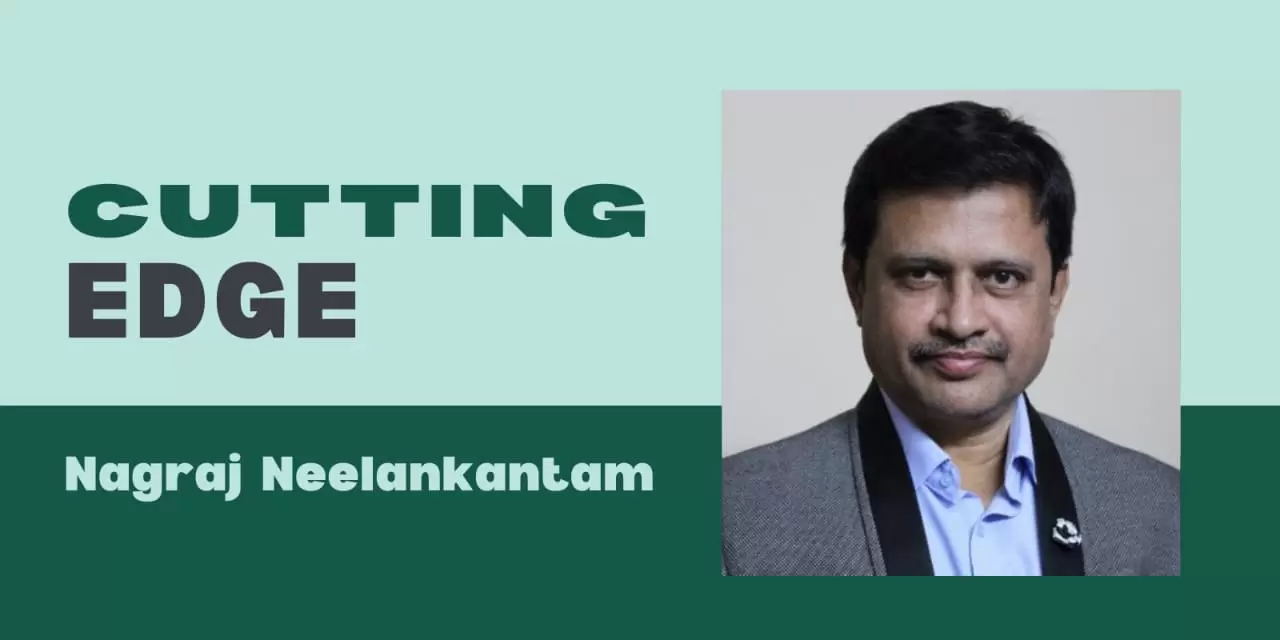It took just 72 hours to bring Pakistan to its knees begging for a ceasefire in Operation Sindoor that was launched by India in the early hours on 7 May 2025. Kudos to Prime Minister Narendra Modi for giving such an apt name to the operation to avenge the inhuman and heinous act of the hardliners practising an extreme ideology. Sindoor is an identity of a married woman in Hindu culture that is believed to increase the life span of the husband by preventing him from health problems and attaining success in life. It is one of the tokens of marriage – panca-saubhāgya-lakṣana practised in Indian culture. This was snatched away on 22 April 2025 when Pakistani army-trained terrorists shot down 26 Indian men at point-blank range after ascertaining their Hindu identity in Pahalgam, Kashmir.
Prime Minister Modi knew from earlier experience of surgical strikes in Uri and at Balakot that the time has come to decimate the nerve centre of terrorism, that is the Pakistani Army as a final solution. All Paki Generals from the present mullah Asif Munir to earlier ones, practice jihad as a tool for pursuing terror activities. The sudden announcement of a ceasefire after 72 hours of operation Sindoor with brief initial violations by Pakis is likely to hold, at least for quite some time due to the severe thrashing they got from the Indian Armed Forces, especially the Indian Air Force that crippled Pakistan and called its Atomic bluff by hitting at its very doorstep. But true to their canine nature, they will start wagging their tail at some point of time in the future.
The people in the country are baffled by the ceasefire announcement, and initial reactions are of disappointment without realising the impact and scale of the Indian victory. The opposition is confused and does not know how to react, but as is their wont, some leaders are making extreme statements like, Modi snatched a defeat from the jaws of an Indian victory over Pakistan. There are several impassioned debates on TV, and numerous theories are floating on social media for and against the ceasefire decision. Busy time for visual media to increase TRP and subscriptions. But let us not be distracted from a well-deserved victory and cherish the moment of triumph of the Indian Scientific and Technological (S&T) achievements that brought this day of reckoning. The focus of this article is on India’s S&T prowess that brought a swift end to a conflict that would have dragged long for months and probably killed several thousand people. Two aspects of a paradigm shift that happened in the last decade are summarised.
1) Modernising Indian Armed Forces: Under this initiative, four steps were taken:
- i) Purchase of critical equipment and components at different levels to develop a foolproof Indian Defence System, keeping in mind a two-front war with Pakistan and China. S-400s were purchased from Russia against the American threat of sanctions. 36 Rafale multirole fighter aircraft were purchased from France against a strong and vilified campaign of the Congress Party, calling Modi “chowkidar chor hai”. But the controversy was put to rest by the Supreme Court decision stating that neither irregularities nor corruption were found, and the Congress Party was pushed to oblivion in the elections. An order for 26 more Rafales has already been placed to fulfil the immediate requirement,
- ii) In a parallel effort, major steps towards the Make in India policy were taken. As a result, in-house MR-SAM (Medium Range – Surface to Air Missiles) were developed by DRDO in collaboration with Israel Aerospace. Bharat Electronics Limited (BEL) later integrated these missiles into the Indian Navy. These were commissioned in 2016 and were operational during Operation Sindoor. The Akash missile system was indigenously developed by DRDO, which can neutralise a variety of aerial threats, including aircraft, UAVs, and cruise missiles. It is equipped with command guidance and a phased array radar that enables accurate tracking and engagement. While DRDO worked on R&D aspects, precision manufacturing is outsourced to PSUs like BDL and private sectors like Tatas, L&T and others under a Public Private Partnership (PPP) model. The jewel in our arsenal, the BrahMos missile, is jointly developed by India and Russia. This missile is one of the world’s fastest and most precise cruise missiles, the production of which was fast-paced in the last decade. A few days back, Defence Minister Rajnath Singh has launched another Brahmos facility in Lucknow, Uttar Pradesh. India has mastered the technology of the BrahMos missile and developed several variants that can go much longer at supersonic and much higher speeds. This is an unmanned payload rocket which is equipped with a propulsion and guidance system with an aerodynamic frame, precision-guided weapons, and a warhead as envisaged by our missile man, Dr. APJ Abdul Kalam. Both Brahmos and Akash missiles gave a stellar performance in the ongoing operation Sindoor. The Vikrant class or Indigenous Aircraft Carrier (IAC) is a class of aircraft carrier built for the Indian Navy. The class represents one of the largest warships and the first aircraft carrier to be designed and built in India. It was commissioned by the Prime Minister on 2 September 2022. This is the addition of several indigenously developed warships of the destroyer and frigate classes.
iii) Revival of decommissioned weapon systems. Under this initiative, several private sector startups like Zen Technologies and a world-class PSU like BEL played a vital role. Vintage anti-aircraft guns like the L60, L70, and Zu-23 purchased from Russia decades ago were modernised with an electro-optical fire system commonly referred to as radar. With this upgrade, a normal anti-aircraft bullet that is fired becomes a radar-guided bullet against an aircraft, UAVs, or even a cruise missile. This is the cheapest option against loitering munitions like suicide or Kamikaze drones as the cost of a bullet is much less than any of these drones and,
- iv) Upgradation of the existing Sukoi-30 and Mirage aircraft to configure with the modern command and navigation system for precise targeting of objects in air and on land.
2) Development of an Integrated Aerospace Architecture for Indian Defense System: This was the greatest challenge that Indian scientists overcame with the development of Akashteer, a multi-layered command system and AI-driven for both defense and assault purposes, integrating the weapon systems grid. It is the nerve centre for the Indian defense system that uses real-time satellite imagery via ISRO’s Earth Observation satellites, precision mapping, and target locking via India’s NavIC GPS. It can send drone swarms with a 10 kg payload at high speed for long distances without being detected by radars. This is an astonishing leap in our in-house and indigenous capabilities under the Make in India initiative that shook the global military hierarchies in the Western world and in China. Indian scientists at DRDO, BEL, and ISRO worked continuously for thousands of hours and burnt the midnight oil to put the architecture of the Indian Defence System in place.

Akashteer is an equivalent of American decadal efforts to develop Network Centric Warfare (NCW), a military doctrine that utilizes information technology and communication networks to enhance combat power by linking sensors, decision-makers, and shooters using AI. India has shown that we have already achieved this milestone in Operation Sindoor. Just imagine a grand picture of air, sea, and ground that is available to a commander in a language that he understands, be it the army, navy, or air force that is network-centric. This can be devastating for an enemy who is fighting such a formidable adversary. This type of network-centric warfare is difficult to jam because no outside equipment is used in an all-in-house indigenous effort. This is the level of proficiency that was demonstrated by Indian defense system in the operation Sindoor, where targets were hit at 1 metre accuracy. This has scared the technologically developed Western world of the USA, Europe, and even the Russians, Chinese, and Israelis. Our integrated defense system has demonstrated that it has worked better than the Iron Dome of Israel, which is effective over a small area of sphere in comparison to India, which has to cater to vast stretches of the Indian borders.
Earlier, the world had an opinion that though Indians are a good fighting force, but they are not technology-enabled. Operation Sindoor has changed this world view to the shock and dismay of the people, the world over, and even within India. People are not aware of the developments in the defense sector that have taken a great leap in the last 10 years due to the efforts of the Modi government to make India Atmanirbhar. The dream of becoming a technological and economically developed nation by 2047 looks nearer now than a distant dream.
The 3-day Sindoor operation has announced the arrival of India as an AI-enabled regional superpower. The way targets were decimated with precision deep inside Pakistan territory showcases the prowess of Indian technological advancement. India also attained a moral victory in a 72-hour engagement by demonstrating that we are not interested in harming and inflicting civilian casualties, as seen in our restrained response with precision strikes against extreme provocation. Our interest is only to take out the troublemakers, no matter where they hide. We also cautioned the world that we can hit targets at will with our eyes in the sky in the Asia-Pacific region. This should serve as a sufficient warning to the Chinese and other trouble-making neighbours not to venture into any misadventures. The Chinese, of course, have tasted the might of our infantry in Galwan in recent times. Today’s India is capable of decimating enemies without breaking a sweat that is demonstrated in operation Sindoor where Pakis failed miserably against our onslaught with their borrowed Chinese defense equipment of very low standards. And, we have not even used 5% of our AI-enabled arsenal and demonstrated our full capabilities of what India can do in modern-day warfare. Failure of Chinese equipment is not surprising due to its reputation, jocularly referred to as Sasta Chinese Maal.
A comparison of the American doctrine of “shock and awe”, practiced by them post 9/11 attack on the twin towers in New York, is a good example of today’s reality. While Americans took several months to years to subdue their enemies, killing thousands of civilians as collateral damage, India took 3 days to achieve its goal without any civilian casualties, except the terrorists disguised as civilians. That separates India from the rest of the world.






